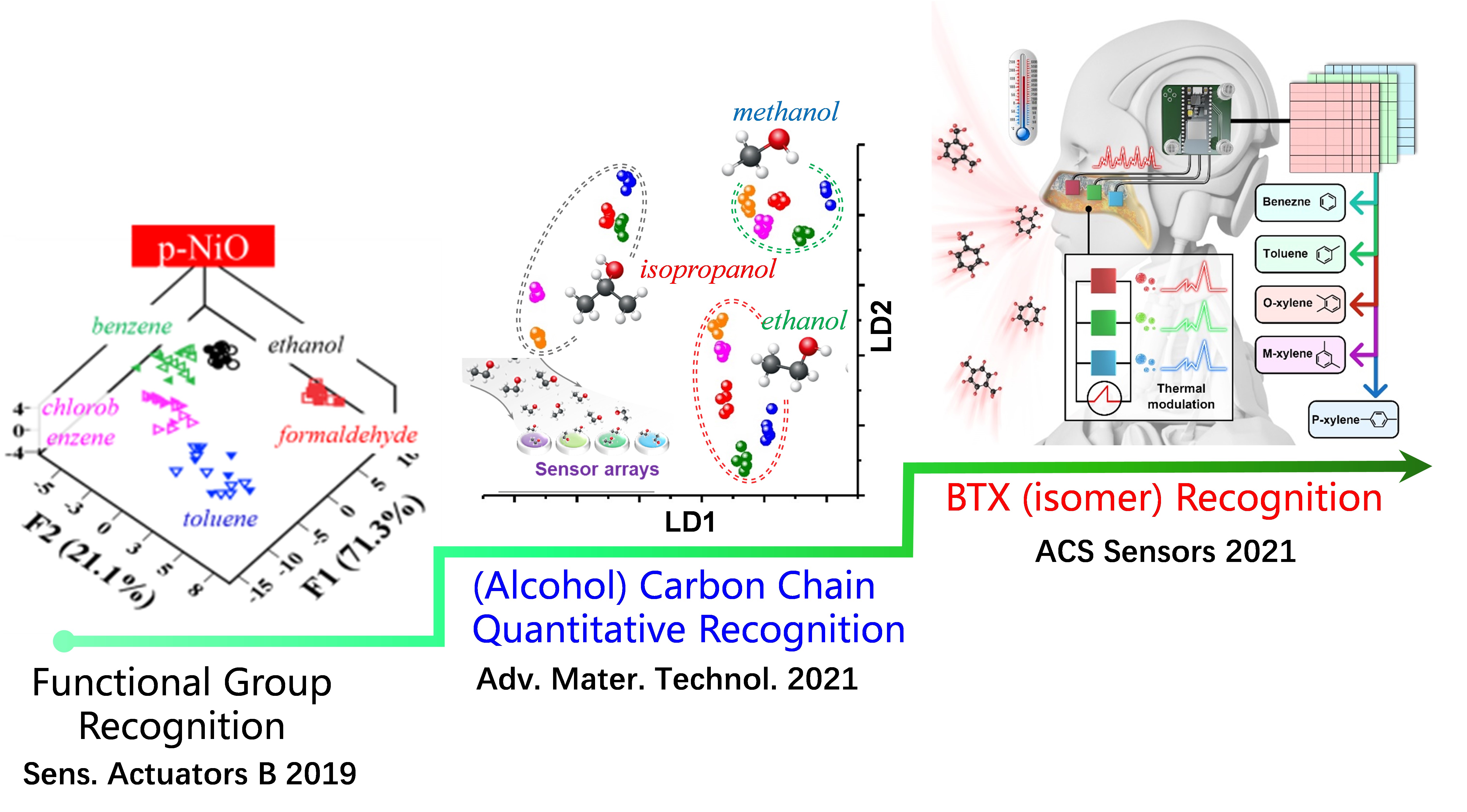
A research group led by Prof. MENG Gang from Hefei Institutes of Physical Science(HFIPS), Chinese Academy of Sciences conducted a series of study on VOCs molecule recognition in which the team discriminated five VOCs with different functional groups and also developed a smart system to accurately identify five BTX molecules.
Volatile Organic Compounds, or VOCs, are substances from which some pollutants, like PM2.5 are formed. With the ongoing industrialization and urbanization, VOCs has been inevitably emitted into the atmosphere. Air pollution occurs. To monitor air and then control air pollution, VOCs monitoring is understandably important.
For VOCs monitoring, metal oxide semiconductor VOCs sensor stands out for the advantage of being compact and low-cost especially compared to other monitoring tools.
However, it has its own bottleneck. Generally speaking, sensors recognize the target gas by the redox reaction between the surface and the gas. But the metal oxide semiconductor VOCs sensor has a wide scope for redox reaction that means many gases can react with its surface. This poor selectivity, especially for VOCs molecules, limits its applications.
Actually, p-type oxides sensor as one of the metal oxide semiconductor VOCs sensors has excellent catalytic oxidation properties toward VOCs. That was why the team picked the NiO-based p-type oxides sensor as their study candidate.
They first investigated the p-type NiO sensor by a thermal modulation to confirm its great ability to recognize VOCs. In their experiment, the sensor could discriminate five VOCs with different functional groups.
Then, they pushed their work further to improve the recognition capability of NiO-based sensor arrays.
They expanded the number of NiO based sensors by series of extrinsic doping with the support of a unique programmed cooling temperature modulation waveform, through which the recognition capability was greatly enhanced.
This new assembling helped to achieve the quantitative recognition of three alcohol VOCs with similar structure, properties and concentrations via extracting the subtle features of tested VOCs.
Moreover, based on their previous work, the team also developed another smart recognition system with thermal modulation, including sensor arrays, electronic circuits, and Wi-Fi modules, which can quickly, stably and accurately identify five BTX molecules (including benzene, toluene, and three isomers of xylene), also a group of VOCs, in an ambient air background.
These work highlights that appropriate thermal modulation offers a powerful route in extracting the feature differences of structurally similar VOCs molecules, and it offers new avenues for exploring future advanced VOCs recognition electronics.

Five VOCs with different functional groups were firstly be distinguished. Expanding sensors number facilitates concentration discrimination of alcohol molecules. Smart recognition system was also developed to identify five BTX molecules. (Image by LI Meng)